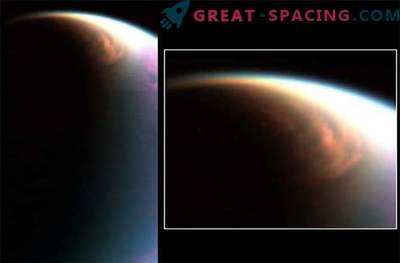
NASA’s Saturn mission was able to witness the beautiful movement of summer methane clouds in the thick atmosphere of the moon.
During the completion of the flyby of the Titan on October 29-30, NASA’s Cassini mission managed to make a series of observations revealing detailed changes in the atmosphere of Saturn’s moon. Of particular interest during the 11-hour period were high-altitude methane clouds, which appeared, dispersed and drifted at a speed of 14-22 miles per hour.
Titan is a small world with its own laws. Its surface is covered with seas and lakes of liquid ethane and methane, which cause a thick lunar atmosphere in the methane cycle. It resembles the water cycle on Earth. Methane evaporates from the seas, condenses in the atmosphere and falls as rain on a carbon-rich surface. Because of this, rivers, carved canals and dramatic valleys appear.
As part of these observations, bright clouds can be seen at a small height, slowly moving between the northern Lake Ney and the sea of Punga. This helps to get a more detailed view of the atmospheric processes on the surface from a great height.
These observations allowed scientists to make a frame-by-frame video, highlighting the dynamics of the atmosphere, and made it possible to separate instrumental noise (cosmic rays, the effect on the camera sensor) from real phenomena. At the center of this short video is the methane cloud movement:
Although methane clouds were recorded before, but such a detailed image was obtained for the first time. This helps to better understand the complex atmospheric processes of Titan. And, as recognized by NASA, we still have a lot to learn.
“Titan's climate models predicted more cloudy activity at the beginning of summer in the Northern Hemisphere than that observed by Cassini. This indicates that our understanding of the change of seasons on the satellite is not yet complete, ”the space agency wrote in a statement.
Although Cassini approaches the finale of his mission (the arrival of the spacecraft at the gas giant's polar orbit, which allows it to fly between the gaps of Saturn's rings, will end up burning in the atmosphere next year), he will continue to monitor Titan's atmosphere and follow how it changes over the coming months.











































